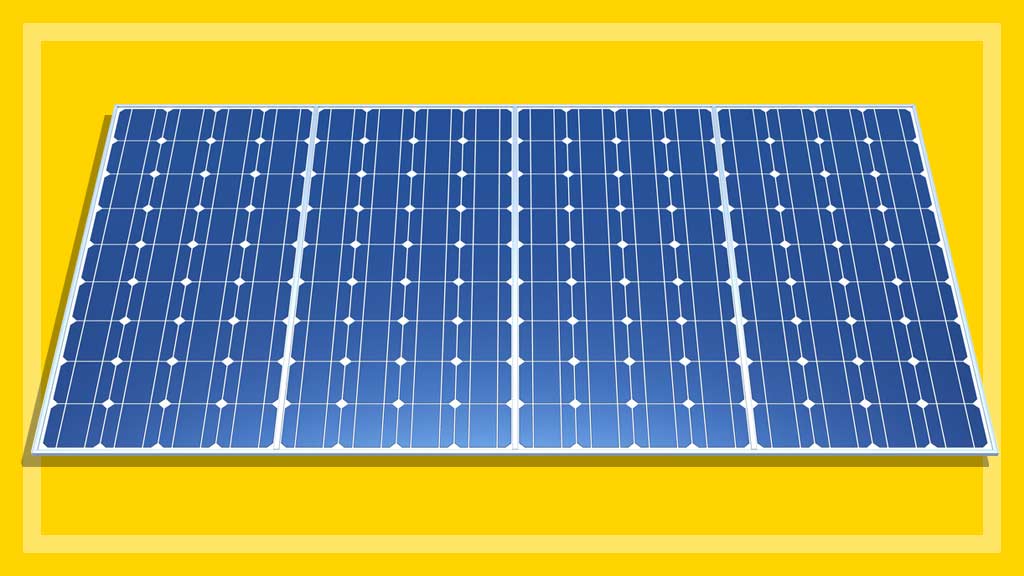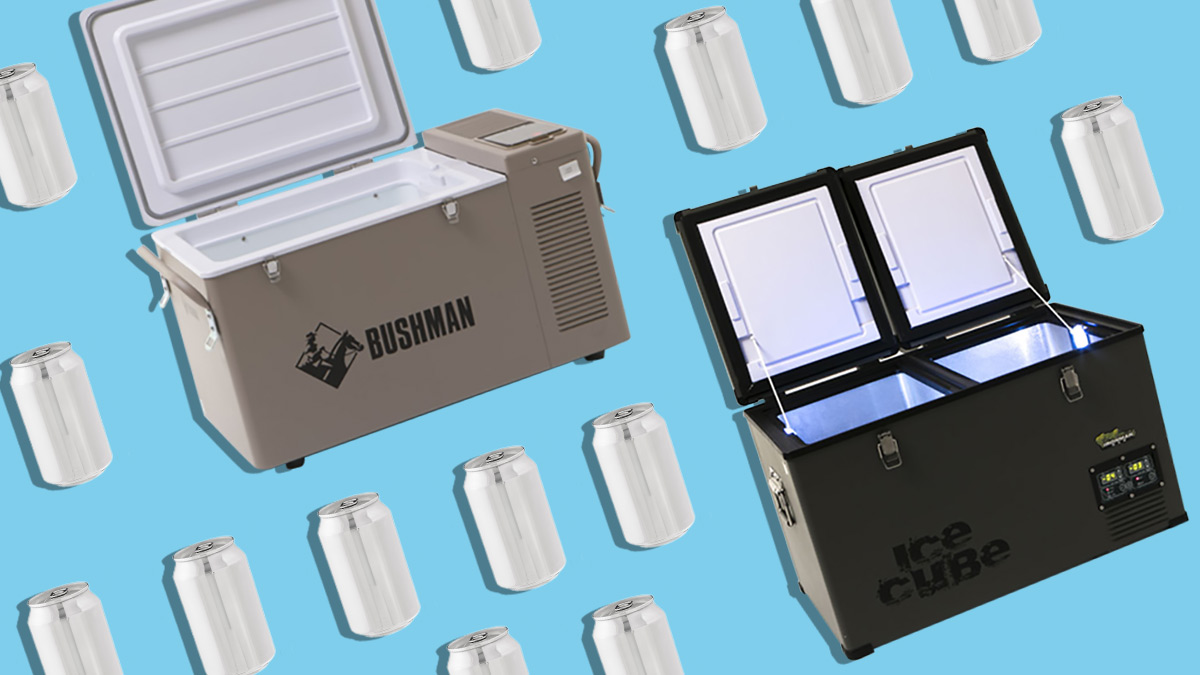Get our independent lab tests, expert reviews and honest advice.
What to know before buying a portable power station
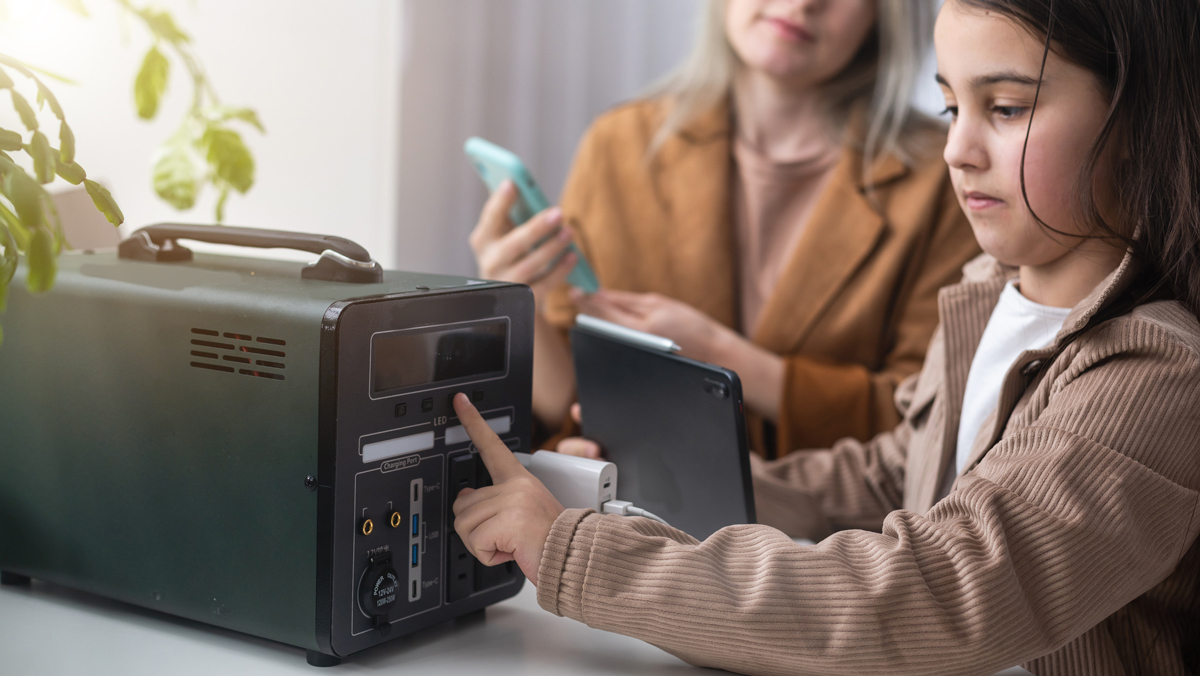
Portable power stations are an option for a less noisy and non-fuel based version of a generator. They come in different sizes which means their usefulness includes anything from powering a caravan, to recharging a smartphone or helping you in a blackout situation.
On this page:
- Pros and cons of portable power stations
- Choosing the right size
- How to charge a portable power station
- How much do they cost?
- How long do they typically last?
- What to look for in a portable power station
- Safety concerns
- How to maintain a portable power station
What is a portable power station?
Think of portable power stations as very large power banks, or a less noisy and more compact generator. In the same way you’d use a power bank to charge your smartphone, a power station can charge or power a variety of tools or appliances, sometimes simultaneously. They can also be called a portable power supply, portable battery pack or portable solar generator.
Portable power stations store electrical energy and most of them have a variety of outputs, ranging from USB to your standard 3 pin plug. They’re most useful for remote situations like camping, or during an emergency when you need power in a blackout.
Pros and cons of portable power stations
Pros
- Quiet
- Easy to operate and start
- No emissions
- No carbon monoxide
- Some can be recharged by solar power
- Portable (to a limit).
Cons
- Only suitable for cases where you won’t need power for too long
- Can be heavy in comparison to other comparable generator types
- New to the market, so very expensive for large ones
- May not be able to run as many appliances as a typical generator
- Take several hours to recharge via solar.
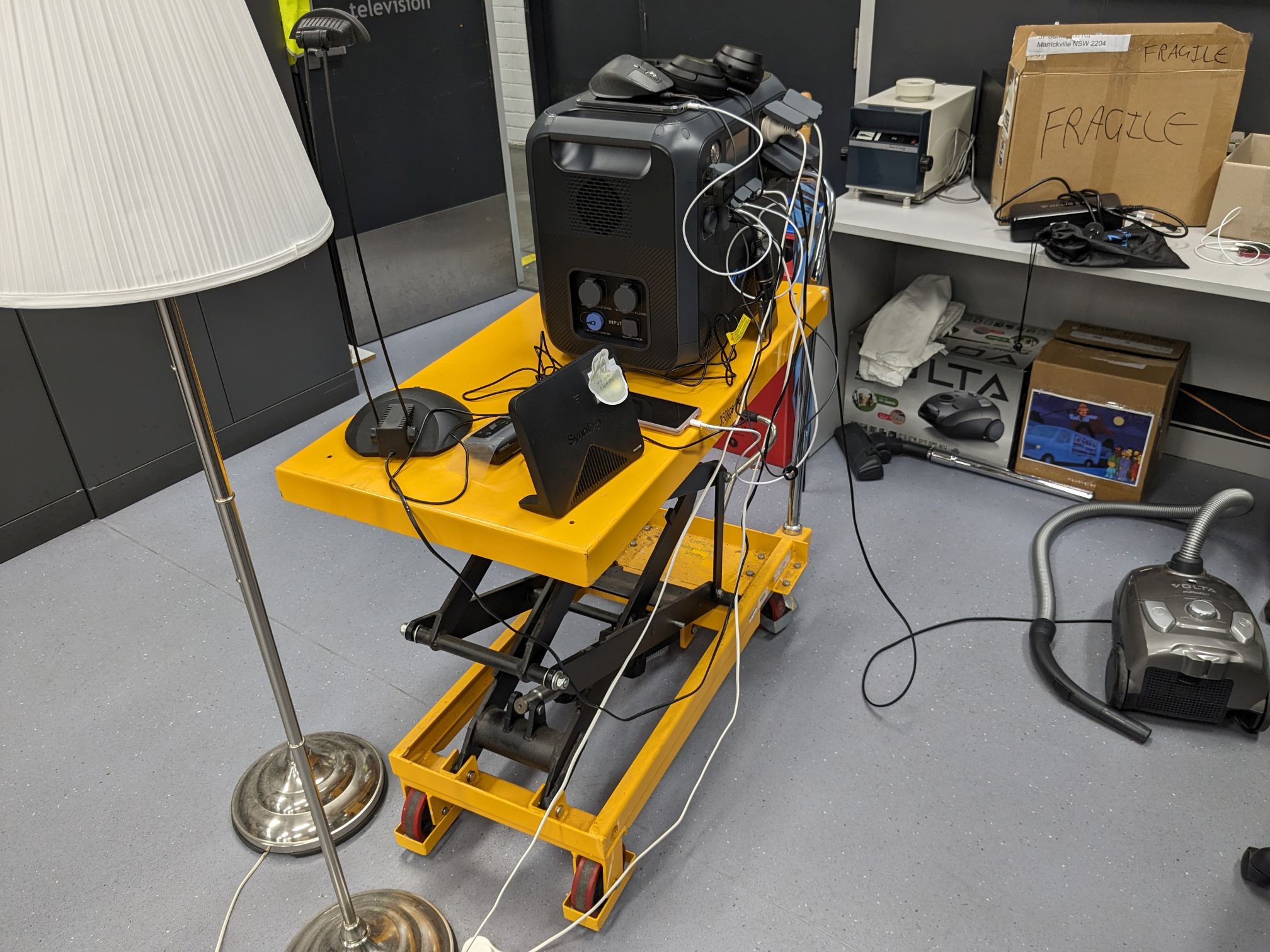
When to use a portable power station
- Outdoor activities: hiking, camping or anywhere where access to power is limited.
- Emergency situations: blackouts and brownouts can be common in certain areas where power supply is unstable, whether that’s through natural disasters or unstable networks.
- Recreational events: picnics and events such as conventions held outdoors where power supply is limited.
- Remote work: where there is limited access to electricity in remote areas, portable power stations can be a useful access point.
- Travelling over land: however you’re travelling, easy access to recharge your items can be useful.
- Construction sites: whether you’re a tradie on a single house build or in a major construction site, a lot of tools need power to run. You’ll often find a portable power station in a tradie’s toolset.
Choosing the right size
Anything that runs on electricity can be powered by a portable power station, but you need to make sure that the model you choose can supply enough power. If you’re looking to power a product with a high energy use, like an electric heater, you’ll need to have an appropriately sized station to match.
To find a power station size to suit your needs, take the watts of each device you plan to plug in, determine an approximate usage time, and multiply. This will give you the total Watt hours required, which you can match to the available Watt hours in the power station’s specifications.
It’s also worth noting that many appliances have a peak power to start with, and then a continuous power to keep them going. For example, a blender might use a peak power to crush ice, but continuing that usage would drop down the Watt usage. Where possible, note your peak load demands to find a battery that can supply it.
How to charge a portable power station
All of the power stations we looked at can be charged primarily by plugging into a standard 3 pin plug or AC wall socket, but there are other options depending on your needs. Some have a “cigarette lighter” input so you can charge from your car, while others have inputs for solar panels. You can also buy convertors for lighter ports if one isn’t included in the box.
The time it takes to recharge fully will depend on the size of the battery and the output of the supplied charger. In our testing, an AC wall charge took from one hour to more than five hours for a full charge.
Charging with solar
Only some power stations accept solar input. Solar can also take a long time to recharge, but if it’s just sitting out in the sun it doesn’t need much management, apart from the run of the mill interference from wind, kids, and pets.
We tested portable power stations from Bluetti and Ecoflow that have solar panels as optional extras and found that they took over five hours to recharge to 44% and 79% respectively in sunshine with no clouds. But again, it’ll depend on the size of the battery (the Bluetti was much larger) and how many solar panels you use.
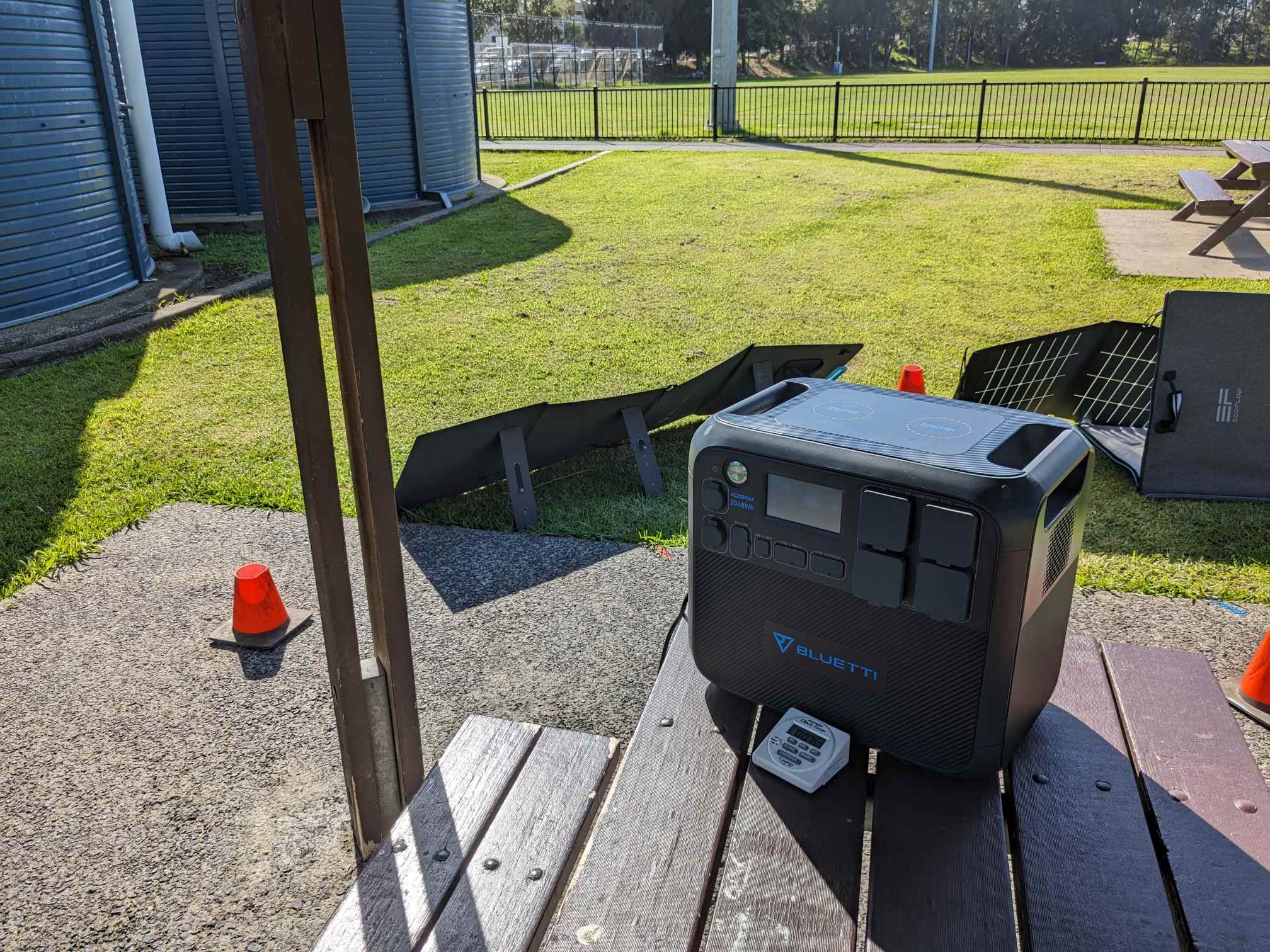
How much do they cost?
Portable power stations range in price from a couple hundred dollars up to several thousand dollars. Usually more expensive power stations will mean a bigger (and heavier) battery, as well as a wider range of output and input options.
How long do they typically last?
Depending on the type of battery technology, a portable power station’s lifespan is based on the number of recharges it will deliver. Older types of battery technology will deliver 500 discharge and recharge cycles, but newer lithium-ion batteries claim to deliver 2000–3000 discharge and recharge cycles.
Claims on the five portable power stations we bought for testing ranged from 500–3500 cycles. Like any type of lithium-on battery, you’ll have to maintain it by making sure it’s regularly charged and used on a schedule (just as you would with any other type of generator).
Claims on the portable power stations we bought for testing ranged from 500–3500 discharge and recharge cycles
Physical longevity will depend on how well you take care of it. Reducing knocks and bangs (admittedly difficult to do if you’re taking it off road) throughout its life and making sure it’s well maintained will help it last till its final discharge.
It’s worth making sure you look at the warranty as well before you buy, as this is generally a good indicator of the manufacturer’s confidence in their product. The power stations we looked have warranty periods of one to five years. If and when they fail, check your rights under the Australian Consumer Law to make sure you get a decent length of life before any fault becomes evident.
Recycling a portable power station
While Australia does have a battery recycling stewardship program called B-cycle, the current limit is around 5kg, which many of these power stations will exceed. We suggesting going back to the original retailer and asking where you can drop it off.
Product images of the five portable power stations we looked at for this guide: Anker 521, Bluetti AC200MAX, Contech S150, Ecoflow River 2 Pro, and Goal Zero Yeti 200X.
What to look for in a portable power station
Size/weight
The bigger the battery, the more charge it can hold and the longer it’ll last in terms of powering your equipment. But with more power comes more weight.
Equivalent energy output generators are lighter than power stations, so keep this in mind if you’re planning on taking it anywhere. More weight means less flexibility for taking it remotely, or more fuel you’ll be using in your vehicle to transport it.
Battery type
Some claims have minimal recharge and discharge times of up to 500 cycles, but other types of battery technology claim to recharge and discharge over 2000 cycles.
We haven’t tested claims relating to battery type (in terms of how many discharge and recharges they can deliver), and this is generally because of how long testing takes on the recharge side of things. By the time we’d be ready to release our results, the product would no longer be available.
Power outputs
Different models offer different outputs for your various devices, ranging from your standard AC wall plug to wireless charging for smartphones and everything in between. Decide which types of devices you’ll be recharging with the power station so that you can make a decision upfront and not be left in the dark if you don’t have the appropriate output.
These are the outputs we found when looking at portable power supplies:
- 3 pin GPO
- 12V car socket
- wireless charging
- USB-A
- USB-C.
Using solar panels to generate energy for a power station
Are you planning on going remote for a decent amount of time and using your power station? Will you have limited or no access to a reliable mains power supply to recharge? If the answer is yes, then it’s worth investing in solar panels.
You’ll need to spend some time learning how long they take to recharge the power station. We found a full day with a single 200W panel can get you to around a half charge depending on the size of the battery.
Some solar panels can be bought directly from the retailer, which is much more sensible than jury rigging something unless you understand electronics. Make sure they come with the appropriate cabling from the solar panels to the power station.
Portable power stations vs portable generators
The average generator requires fuel, which isn’t always accessible in remote areas. You’ll also need to make sure you maintain them and not leave fuel standing in the tanks for long periods of time. Portable power stations are very quiet compared to fuel-powered generators, so they’re useful if neighbours are close.
Because they aren’t fuel powered, power stations don’t emit any emissions or carbon monoxide so you can use them indoors. All of the portable power stations we’ve looked at only require a button to start, but many generators powered by other fuels also have a button to start these days as well, with cord pulls becoming rarer to see in the market.
Safety concerns
As long as you’re following the manual that covers any device carrying a lithium-ion battery, then you shouldn’t have to worry about safety concerns. If you need any replacement cabling, buy it from the original supplier to minimise any issues.
Two safety features you can look for are overload protection (the device overheating if you plug too many devices in) and overcharge protection (prevents overcharging your battery when it’s recharging). However, we found these features were lacking in any portable power station we tested, and if they did exist, they weren’t declared in any documentation that came with the products.
As always, you should follow the ACCC recommendations when it comes to any product with a lithium-ion battery, and its important to note that they are not water proof – all have fans, which is a point of entry for water.
How to maintain a portable power station
Firstly, follow the manufacturer’s instructions. They’re likely to be similar to the below, but always give them a thorough read when you first buy a portable power station.
You’ll need to schedule maintenance at least every three months. Run a recharge interval on your battery to make sure it doesn’t lose too much charge and is ready to go if you need it in an emergency. You can damage the battery by leaving it unused for too long (over 12 months).
Make sure that it’s stored in a cool dry place, as batteries can sometimes be affected by cold and heat extremes. Keep it reasonably clean, wiping it down with a soft cloth and removing debris from inputs and outputs. Repeat the process with cables you use with the power station as well.
Always use the original cables and when they become damaged through use or misadventure, get replacements from the original equipment manufacturer. Using third-party equipment means relying on unknown variables.

